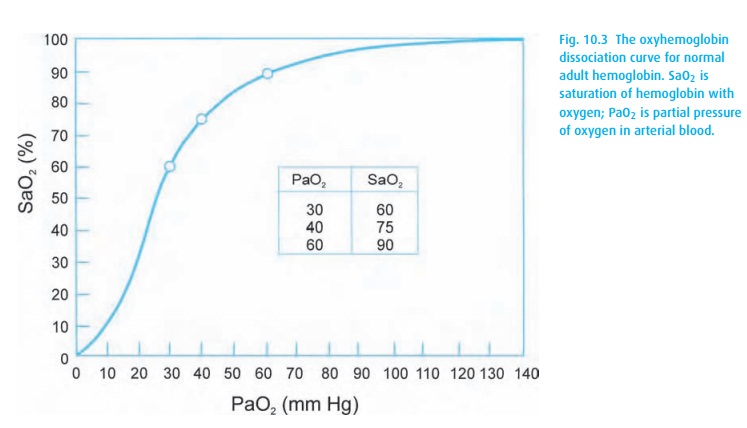Chapter: Essential Anesthesia From Science to Practice : Applied physiology and pharmacology : Anesthesia and the lung
Oxyhemoglobin dissociation curve

Oxyhemoglobin dissociation curve
The amount of oxygen bound to hemoglobin depends on the qualities of the hemoglobin molecule. The familiar oxyhemoglobin dissociation curve appears in Fig. 10.3. Observe the steep part of the curve where small changes in PaO2 result in large shifts in saturation. The point of 50% saturation (P50) provides a helpful reference. In adults, it hovers around 26 mmHg (the hemoglobin will be 50% saturated with oxygen at a PaO2 of 26 mmHg). The left shift of fetal hemoglobin brings its P50 to 19 mmHg.
A simple mnemonic helps to define several points on the oxyhemoglobin dis-sociation curve: 30–60; 60–90; 40–75 (Fig. 10.3). It does not sound much like a mnemonic, but put it to a beat and it works quite well. The first number of each pair cites the PaO2, followed by the SaO2. We use this to estimate (roughly) the PaO2 from the SpO2 (obtained from the pulse oximeter). A PaO2 of 60 mmHg or less defines hypoxemia (SpO2∼90%), and 40 mmHg is the normal mixed venous PO2.
Four factors influence the position of the oxyhemoglobin dissociation curve. For ease of memorization, we cite those factors that shift the curve to the right: increasing temperature, CO2, H+, and 2,3-diphosphoglycerate (DPG). RememberpH decreases with increasing [H+ ].
Related Topics